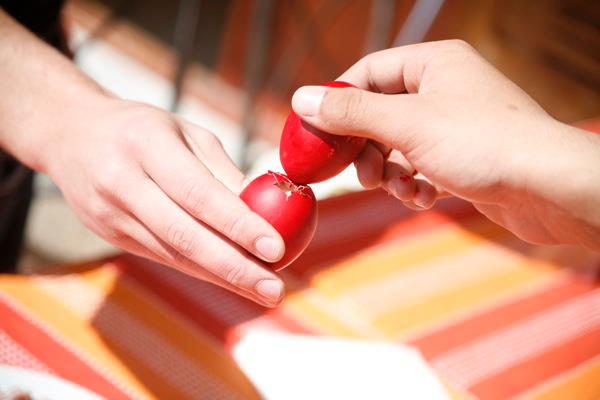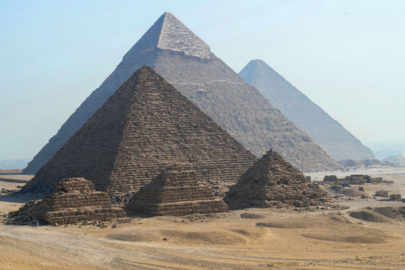Holy Thursday, also known as Maundy Thursday, marks the day of the Last Supper for Jesus Christ. An important day for Greek Orthodox Christians, there are a number of customs and traditions associated with it.
Eggs
Traditionally red eggs are dyed on this day. The color – red – is symbolic of the joy of the Resurrection. Another story goes that a woman met Christ after the Resurrection and didn’t believe that it really was the Lord until he turned the eggs in her basket red. Greeks of Asia Minor wouldn’t dye their eggs until the church bells chimed because traditionally housewives are not supposed to do anything on this day apart from preparing for Easter celebrations. On the isle of Tinos, red eggs are dyed along with a baby’s cloth or some fabric that the dyer has a positive association with, in order to bring good luck. In some areas, people also dye one black egg to remind them of family members and friends who have passed away.
The first egg dyed is of particular importance and even has a special name – Megalopeftissio! Typically, the first dyed egg is placed next to the family’s icons. In some areas it is thrown in the house’s courtyard in Easter so as to ward off evil spirits. Others still, may bury this first egg in the fields so as to secure good crops for the year. Or, if you want to keep the snakes away, perhaps you can burn the egg shells as they do in some area.
These eggs will later be used on Easter day as family members crack each one to see which is the strongest. The winning egg, like the first egg, also has special significance.
Easter bread
Apart from dyeing eggs, househwives around Greece also knead Easter loaves, known as tsoureki, with an egg in the middle of the Cross. On the isle of Tinos, they shape the dough to bake vlachoules for the girls and officers for the boys.Extra oblation bread is baekd and taken to church to be consecrated. The consecrated bread in some areas is kept for the good of the house.
Many Greeks remember their dead on this mournful day by taking oblation bread and Kolyva (boiled wheat and spices offered at funerals) to church for the priest to bless and distribute to the congregation.
Godparents
Unfortunately, the daily rush prevents godparents from visiting their godchildren on the day typically reserved for it, which is Holy Thursday. On this day, godfathers and godmothers give their goddaughters and godsons givts, usually shoes, and lambada candles (Easter candles to be lit at the midnight mass of Holy Saturday).
Carols
In some regions, children sing Easter carols. On the isle of Skiathos, the children hold a candy cross decorated with flowers and an icon of Christ along with a basket to get tips. In other areas, children carry a wooden swallow stuck on top of a walking stick and sing a swallow’s song as the day is also known as swallow’s day.
Church
Churches around Greece are draped in black and purple ribbons to show mourning. Congregations gather to hear the Twelve Gospels. On the isle of Patmos at the Monastery of St. John the theologian, the monks create the Last Supper. At the Convent of St. John the Baptist in Caesaria, the archbishops wash the feet of the twelve priests while a priest reads the passage from the Gospel of the day.






































